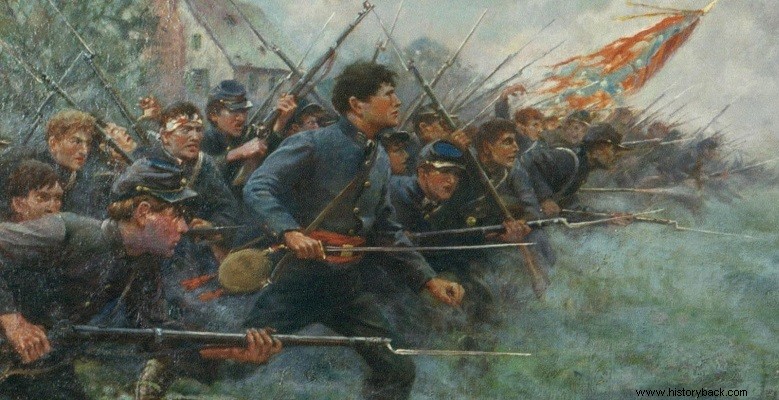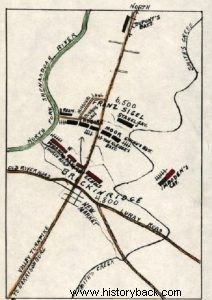
In the spring of 1864, Northern general Ulysses Grant began his campaign to force the South into capitulation. The control of the Shenandoah Valley was a strategic objective of this campaign.
Grant led the bulk of his forces against the forces of General Lee, commanding the South's Army of Northern Virginia. At the same time he detached a mixed force of 9,000 men, under Major General Franz Siegel with the task of securing his left flank and threatening, if possible, Lee's flank through the Shenandoah Valley.
Siegel moved toward Staunton, Virginia with the intention of joining forces with Lt. Gen. Crock. Siegel had a total of 9,000 infantry and cavalry and 28 guns, divided into an infantry command under Brigadier General Sullivan and a cavalry command under Major General Stachel. Marching anyway, Siegel was forced to leave his guards behind. Thus his rank-and-file strength was gradually reduced to 6,300 men.
On the other side, having been alerted to the entry of Northern forces into the valley, Southern Major General John Breckinridge, mustered every available force to confront them. His command consisted of Echols' infantry brigade, Urton's infantry brigade, Imboden's cavalry brigade and an independent command.
However, the pompous title "brigade" should not give false impressions. The "brigades" extended a force corresponding to the regiment. Altogether he had a little over 4,000 men, including a battalion of cadet officers from the Virginia Military Academy, 247 strong and two light guns, under Lieutenant Colonel Shipp.
Breckinridge concentrated his forces at Staunton while ordering his cavalry to watch and if possible delay Siegel. On May 13, Breckinridge decided instead to wait for the enemy to take the initiative and attack first, despite his outnumbered forces. By the afternoon of the 14th, however, Siegel's advance guard had taken up positions north of the village of New Market.
Breckinridge hoped, taking advantage of the terrain (see map) to seriously injure his opponents. The next day he had lined up his forces with the infantry covering the ground along the valley and the cavalry on his right ready to flank the enemy. The cadet battalion was held in reserve.
Siegel deployed his forces accordingly, placing his cavalry on his left to meet the threat of the opposing cavalry. Around noon, after some preliminary moves, Breckinridge launched his attack. The Southerners pressed the opponents and pushed back Moore's brigade of the Northerners occupying New Market. Immediately afterwards they halted to regroup and rearrange their artillery.
A little later they continued the attack. However, they soon found themselves facing the concentrated fire of the superior artillery of the North and were pinned down, while two of their regiments retreated disorderly, leaving a gap in the center of the South. Breckinridge ordered the cadet battalion to fill the gap. During this phase Lt. Col. Shipp was wounded and Captain Wise took command.
At the same time, Siegel launched two attacks which were repelled. The German-born Siegel shouted his orders in German so that his men did not understand him! After repelling the Northern counterattacks, Breckinridge resumed the advance. While crossing a muddy field many cadets lost their shoes which got stuck in the mud. From this incident the battle received the name "battle of the lost shoes".
Despite this, the teenage cadets charged with the lance against the enemy and even overpowered an enemy artillery barrage. Panic prevailed in the ranks of the North, who retreated badly. However, they managed to cross the Shenandoah River and burn the bridge there, stopping the pursuit of the enemy.
Casualties were relatively heavy for the defeated – 841 total men, 96 killed, 520 wounded, 225 captured – for such a small-scale and prolonged conflict. The Southerners had 43 dead – 10 of them teenage cadets – 474 wounded and 3 missing.
The victory was significant as it secured the flanks of Lee's army and overturned Grant's plans. The battle, however, went down in history mainly for the bravery of the intrepid teenage cadets who did not hesitate to march on the enemy guns.

